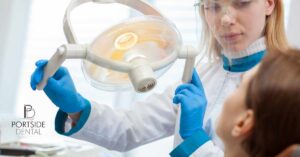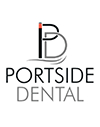Have you ever wondered what you would do in a dental emergency? While it’s not a pleasant thought, dental emergencies can happen to anyone, and being prepared can make a significant difference in the outcome.
Whether it’s a sudden toothache, a knocked-out tooth, or a broken crown, knowing how to handle these situations can make a significant difference in minimizing pain and preventing further damage.
Today, we’ll provide you with the top tips to handle common dental emergencies effectively.
1. Stay Calm and Assess the Situation
The first and most crucial step in handling any dental emergency is to remain calm. Panicking can lead to poor decision-making and increased stress.
Take a deep breath and try to assess the situation objectively. Determine the severity of the issue before taking any further steps.
2. Toothaches
a. Over-the-Counter Pain Relief |
Over-the-counter pain relievers like ibuprofen or paracetamol can provide temporary relief. Adhere to the suggested dosage as provided on the packaging. |
b. Avoid Putting Aspirin Directly on the Gum |
While it’s a common misconception, putting aspirin directly on the gum can cause tissue damage and potentially worsen the situation. |

3. Knocked-Out Tooth
A knocked-out tooth is a time-sensitive emergency that requires immediate attention.
a. Handle the Tooth Carefully |
Only touch the crown (the visible part of the tooth). Avoid touching the root to prevent damage to the delicate tissues. |
b. Rinse and Reinsert (if possible) |
If the tooth is clean, try to gently reinsert it into the socket. Secure it in position by softly biting down on a clean piece of cloth or gauze. If this isn’t possible, keep the tooth moist. |
c. Keep it Moist |
If reinserting isn’t possible, store the tooth in a container with milk or a tooth preservation product, like Save-A-Tooth. Avoid using water as it can damage the root. |
d. Seek Immediate Dental Care |
Time is of the essence in this situation. Get to a dentist within 30 minutes for the best chance of saving the tooth. |
Tip: If you find yourself facing a dental emergency in Newport, don’t hesitate to reach out to Portside Dental. Our experienced team is well-equipped to provide you with prompt and expert care, ensuring you get the help you need for your dental issue. Remember, seeking professional assistance promptly is crucial in any dental emergency.
4. Broken or Chipped Tooth
A broken or chipped tooth can be painful and lead to further complications if not addressed promptly.
a. Save Any Broken Pieces |
If feasible, gather any fragments of the broken tooth. Rinse them with warm water and store them in a container with milk. |
b. Temporary Dental Filling Material |
You can find temporary dental filling material at most pharmacies. Use this to cover any sharp edges or exposed nerves. |
c. Cold Compress |
Apply a cold compress to the affected area to reduce swelling and alleviate pain. |
d. See a Dentist Soon |
Even if the damage seems minor, it’s crucial to see a dentist as soon as possible. They can assess the extent of the damage and provide the necessary treatment. |
5. Lost Filling or Crown
A lost filling or crown can expose sensitive areas of your tooth and cause discomfort.
a. Save the Filling or Crown |
If possible, retrieve the filling or crown. Rinse it gently and store it in a safe place. |
b. Use Dental Cement or Petroleum Jelly |
You can temporarily reattach the crown with dental cement available at most pharmacies. If dental cement is unavailable, a small amount of petroleum jelly can also be used. |
c. Avoid Chewing on That Side |
Until you can see a dentist, avoid chewing on the side of the lost filling or crown to prevent further damage. |

6. Abscess
An abscess is a painful infection that requires immediate attention.
a. Rinse with Warm Salt Water |
Gently rinse your mouth with warm salt water several times a day to help reduce pain and draw out some of the infection. |
b. Over-the-Counter Pain Relief |
Over-the-counter pain relievers can help manage the pain. Nevertheless, they should not be used as a replacement for professional treatment. |
c. See a Dentist Immediately |
An abscess will not heal on its own and requires professional treatment, which may include drainage and antibiotics. |
7. Objects Stuck Between Teeth
Objects stuck between teeth can be uncomfortable and potentially damage the gums or teeth if not removed properly.
a. Use Dental Floss |
Carefully attempt to extract the object using dental floss, ensuring you avoid pushing it deeper. Alternatively use an interdental brush, such as a Pikster to push the object out from between the teeth. |
b. Avoid Using Sharp Objects |
Avoid using sharp objects like pins or toothpicks, as they can damage the gums or push the object further in. |
c. See a Dentist if Unsuccessful |
If you’re unable to remove the object, or if there is pain or bleeding, seek professional help. |
These tips are not a substitute for professional dental care. They are meant to provide temporary relief until you can see a dentist. Always seek immediate professional attention for any dental emergency.
By knowing how to respond to common dental emergencies, you can help alleviate pain and prevent further damage until you can receive the proper care from a dental professional. Staying calm and acting promptly can make a significant difference in the outcome of the situation.


I like this web blog very much, Its a rattling nice office to read and find information.Blog money